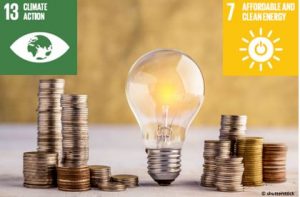Visualization of Energy Investment web page published – based on analysis in Nature Energy journal

CD-LINKS has created a visualization web page that was developed based on an analysis published in the journal Nature Energy, which showed that low carbon investments will need to markedly increase if the world is to achieve the Paris Agreement aim of keeping global warming well below 2°C.
The authors of the analysis find that a fundamental transformation of the global energy system can be achieved with a comparatively modest increase in overall investments. However, a radical shift of investments away from fossil fuels and toward renewables and energy efficiency is needed, including dedicated investments into measures to achieve the United Nations’ Sustainable Development Goals (SDGs).

As part of the Paris Agreement in 2015, many countries defined Nationally Determined Contributions (NDCs) designed to reduce their greenhouse gas emissions. The study confirms that current incentives like the NDCs will not provide sufficient impetus for the “pronounced change” in investment portfolios that are needed to transform the energy system.
To keep global temperature rise to 1.5–2°C, investments in low carbon energy and energy efficiency will likely need to overtake investments in fossil fuels as early as 2025 and then grow far higher. The low carbon and energy efficiency “investment gaps” calculated by the researchers are striking. To meet countries’ NDCs, an additional US$130 billion of investment will be needed by 2030, while to achieve the 2°C target the gap is US$320 billion and for 1.5°C it is US$480 billion. These investment figures represent more than a quarter of total energy investments foreseen in the baseline scenario, and up to half in some economies such as China and India.
Key insights of the analysis have been visualized in a user-friendly way with the CD-LINKS Energy Investment Visualization page, the development of which was led by Valentina Bosetti and Laurent Drouet of the Euro-Mediterranean Center on Climate Change (CMCC).
More detailed information on this story is available from the IIASA news webpage.


